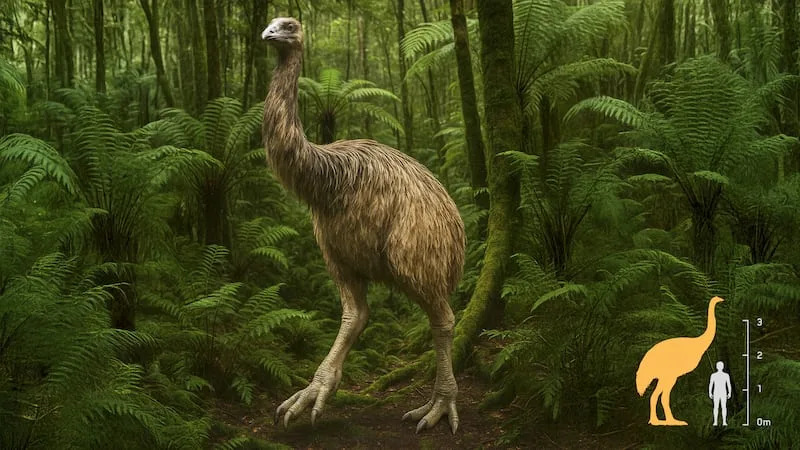Lord of the Wings? ‘Lord of the Rings’ director backs plan to ‘de-extinct’ New Zealand bird
In a “Jurassic Park”-esque fashion, “Lord of the Rings” director Peter Jackson and the Texas-based biotech company Colossal Biosciences are partnering to “de-extinct” the centuries-extinct New Zealand bird known as the moa.
The partnership, according to the The Associated Press, sprung up two years ago after Jackson learned of Colossal’s work to bring back species like the wooly mammoth and the dire wolf.
Jackson’s fascination with the moa
A New Zealand native, Jackson is fascinated with the wingless, long-necked specimen. He called it “part of the country’s DNA,“ in an interview with IGN.
The tallest of the flightless bird, the South Island Giant Moa, once roamed freely on the South Island of New Zealand, but became extinct about 600 years ago due to overhunting by the first Polynesian settlers, who arrived circa 1300.
It’s particularly this rich, shared history is why Jackson wanted the involvement of the Ngāi Tahu, the principal Māori tribe of the South Island.
“The movies are my day job, and the moa are my fun thing I do,” Jackson told AP.
Jackson and his partner Fran Walsh provided $15 million in funding to kick off the moa project with Colossal Biosciences, under one condition — collaboration with the Ngāi Tahu Research Centre, per IGN.
 A depiction is represented of the largest species of moa, the South Island giant moa, which once could stand 12 feet tall. | Colossal Biosciences via Associated Press
A depiction is represented of the largest species of moa, the South Island giant moa, which once could stand 12 feet tall. | Colossal Biosciences via Associated PressJackson, who owns one of the largest private collections of moa bones, facilitated the meetings between Colossal, the Ngāi Tahu and Paul Scofield, the world’s leading moa expert.
The bone collection is significant enough that Scofield, who is also a senior curator of natural history at the Canterbury Museum in New Zealand, described it as a “comprehensive collection” when helping Jackson identify the different moa species represented in his collection.
Colossal’s approach to ‘de-extinction’
The moa project is in its early stages, as scientists are looking for well-preserved bones from which it may be possible to extract DNA, Colossal’s chief scientist Beth Shapiro told AP.
The process will resemble Colossal’s current approach to genetically engineer living species in close relation to the specimen they’re attempting to “de-extinct.”
Comparing the moa’s DNA sequence of living bird species to other flightless creatures such as tinamou and emu will help Colossal understand what made the moa unique, Shapiro said.
But working with birds presents a special challenge because of birds’ embryos development inside eggs. Transferring an embryo to a surrogate will not look like mammalian IVF.
Concerns about reintroduction
Scientists agree that is more feasible to tweak the genes of living animals than bringing back extinct species, which is likely impossible. They also worried that focusing on extinct creatures deters from conservation efforts of currently endangered species, per AP.
According to Duke University ecologist Stuart Pimm, who is not involved in the project, if the Colossal team manages to create a bird with large feet and thick, pointed claws similar to the moa, they will also face the challenge of determining an appropriate habitat for it as reported by AP.
“Can you put a species back into the wild once you’ve exterminated it there?” he said. “I think it’s exceedingly unlikely that they could do this in any meaningful way.”
Pimm added, “This will be an extremely dangerous animal.”
The internet reacts
Some X users immediately pointed to the parallelism of extracting ancient DNA by referencing “Jurassic Park.”
An entire X account devoted to the moa bird posted a flyer teasing a play-on-words title for Jackson’s next epic trilogy: “Lord of the Wings.”
In a Slashdot forum, a user-driven platform similar to Reddit that focuses on science and technology, a user under the moniker PFritz21 comically critiqued the project as misguided.
“Did Peter Jackson not watch the new Jurassic Park movie?!?!” PFritz21 wrote. “Once to [sic] start bringing birds back from extinction, you start to think dinosaurs might be a good idea.”













